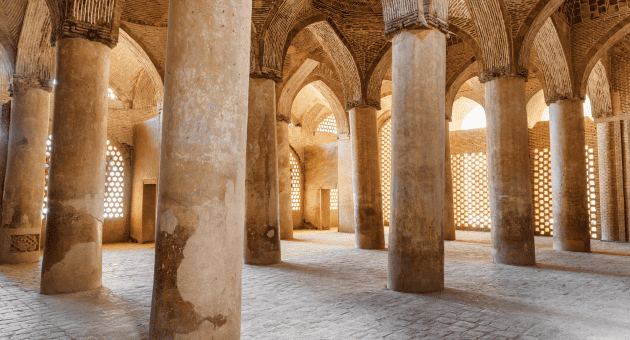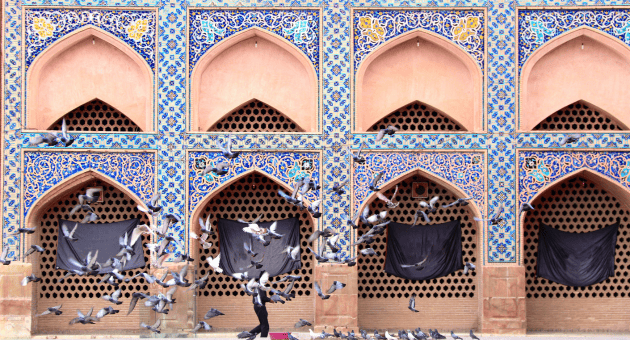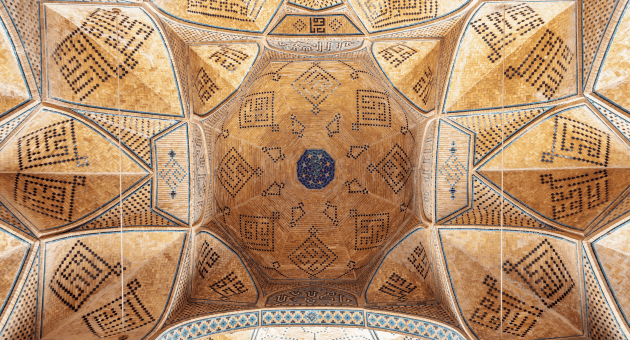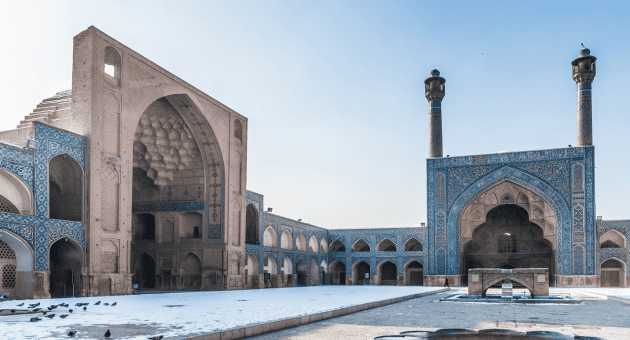The Jameh Mosque of Isfahan is a stunning example of Persian architecture and history and is one of the most significant landmarks of Isfahan, Iran. This magnificent mosque is renowned for its beauty, historical significance, and spiritual importance.
In this article, we will explore the Jameh Mosque of Isfahan, from its early history to its present-day significance, and provide tips and advice for visitors who wish to experience this architectural marvel for themselves.
A Brief History of the Jameh Mosque of Isfahan

The Jameh Mosque of Isfahan has a rich and complex history that spans over a millennium. The mosque was originally built in the 8th century during the Abbasid Caliphate and was constructed on the site of an ancient Zoroastrian fire temple. The mosque was initially a modest structure, consisting of a simple prayer hall and a small courtyard. However, as Isfahan grew in importance as a centre of trade and culture, so too did the mosque.
The Seljuk Empire, which ruled much of Iran and Central Asia during the 11th and 12th centuries, saw the mosque expand and flourish. The Seljuk rulers, who were passionate patrons of architecture and art, commissioned several significant additions to the mosque, including the grand courtyard and its surrounding porticoes. These additions transformed the mosque into a grand architectural masterpiece, with intricate tile work, soaring arches, and stunning mosaics.
Subsequent dynasties, including the Safavids and the Qajars, also left their mark on the Jameh Mosque of Isfahan. During the Safavid era, the mosque underwent significant renovations, including the addition of several domes and the creation of beautiful calligraphy. The Qajar era saw the construction of a new entrance on the eastern side of the mosque, as well as the addition of several new prayer halls.
Despite the many changes and renovations that the Jameh Mosque of Isfahan has undergone over the centuries, it remains one of the most important and beautiful mosques in the world. Its four iwans, which showcase the evolution of Persian architecture, are particularly notable examples of the mosque’s ongoing artistic and architectural contributions. Visitors to the mosque today can marvel at the intricate tile designs, beautiful calligraphy, and breathtaking domes that have made the Jameh Mosque of Isfahan a true masterpiece of Islamic architecture.
The Architectural Marvels of the Jameh Mosque

The Grand Courtyard and Its Surrounding Porticoes
The Jameh Mosque’s grand courtyard is one of the most remarkable features of the mosque. Surrounded by beautiful porticoes that are adorned with intricate tilework and calligraphy, the courtyard is a testament to the skill and creativity of the Persian architects who designed it. The courtyard also provides a space for community gatherings, prayer, and reflection.
The Intricate Tilework and Calligraphy
The tilework and calligraphy in the Jameh Mosque of Isfahan are truly remarkable, and reflect the unique artistic tradition of the region. The intricate designs, patterns, and colours that adorn the mosque’s walls and ceilings are awe-inspiring, and showcase the talent and dedication of the many artisans who contributed to the mosque’s creation.
The Four Iwans: Showcasing the Evolution of Persian Architecture
The Jameh Mosque’s four iwans (or vaulted halls) are magnificent examples of Persian architectural innovation. Each iwan represents a different period in Persian architectural history, reflecting the changing tastes and artistic traditions of the region. The iwans are intricately decorated with geometric patterns, floral designs, and calligraphy, and provide visitors with a glimpse into the rich cultural heritage of Isfahan.
The Domes: A Testament to Architectural Ingenuity
The domes of the Jameh Mosque of Isfahan are nothing short of breathtaking. Each dome differs in design, size, and complexity, and reflects the artistic tastes and innovations of the region over the centuries. Many of the domes are adorned with intricate tilework, calligraphy, and geometric designs that seem to shimmer in the light.
The Spiritual Significance of the Jameh Mosque

The Mosque as a Center for Islamic Learning
The Jameh Mosque of Isfahan has long been a centre for Islamic learning and scholarship in Iran. Many renowned Islamic scholars and teachers have studied and taught at the mosque, contributing to the religious and intellectual life of the region.
The Role of the Mosque in the Isfahani Community
The Jameh Mosque of Isfahan is not only a place of worship and reflection but also an important social and cultural hub for the Isfahani community. The mosque provides a space for community gatherings, lectures, and events, and is often the site of local festivals and celebrations.
The Jameh Mosque in Contemporary Islamic Practice
The Jameh Mosque of Isfahan continues to play a significant role in contemporary Islamic practice. Many people still come to the mosque to pray, meditate, or reflect on the teachings of Islam. The mosque provides a sense of continuity and tradition in a rapidly changing world and remains an important symbol of the Islamic faith.
Visiting the Jameh Mosque of Isfahan
How to Get There and When to Visit
The Jameh Mosque of Isfahan is located in the heart of the city and is easily accessible by public transport or taxi. The mosque is open to visitors from early morning until late afternoon, and visitors are encouraged to wear appropriate clothing and to respect the religious and cultural significance of the mosque.
Exploring the Mosque: Tips for Visitors
When visiting the Jameh Mosque of Isfahan, visitors are encouraged to take their time and explore the many artistic and architectural wonders that the mosque has to offer. Audio guides or guided tours can provide additional context and information about the mosque’s history and significance.
Nearby Attractions and Other Points of Interest
Isfahan is home to many other incredible architectural and historical sites, and visitors to the Jameh Mosque are encouraged to explore the city’s many other attractions. The Chehel Sotoun Palace, the Naqsh-e Jahan Square, and the Vank Cathedral are just a few of the nearby attractions that are definitely worth a visit.
In conclusion, the Jameh Mosque of Isfahan is a magnificent example of Persian architecture and history and is an essential part of any visit to Isfahan, Iran. From its storied history to its breathtaking tilework and calligraphy, the Jameh Mosque is a testament to the skill, creativity, and spiritual significance of the people of Iran.
By visiting this incredible monument, visitors can experience the rich cultural heritage and artistic traditions of one of the world’s most fascinating civilizations.



